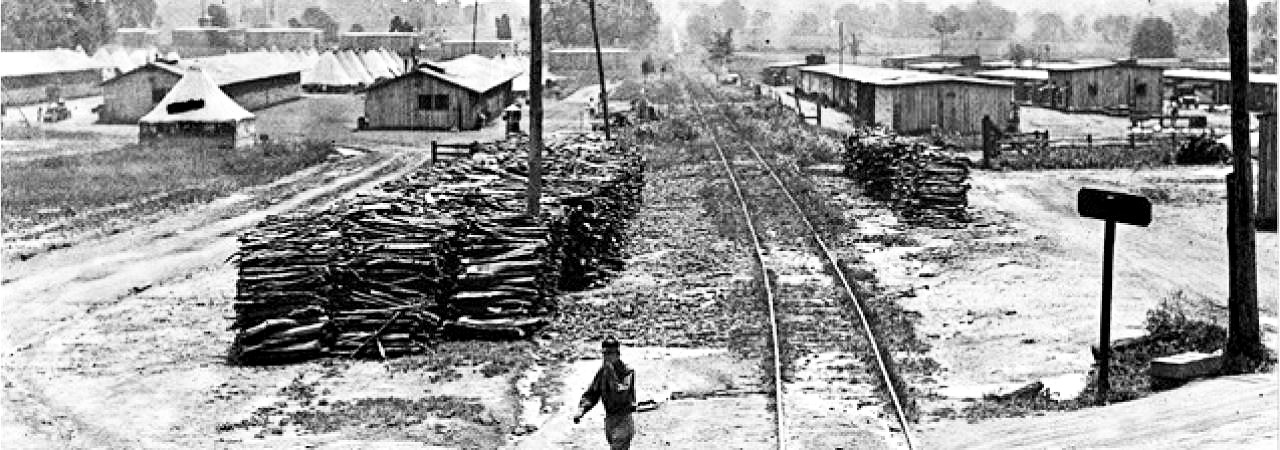Birthplace of American Armor

Richard D. L. Fulton
“No tank is to be surrendered or abandoned to the enemy. If you are left alone in the midst of the enemy, keep shooting. If your gun is disabled, use your pistols and squash the enemy with your tracks… You must establish the fact that American Tanks do not surrender.” —Captain George S. Patton, September 1918
From World War II to Desert Storm to the Ukraine-Russian and Israeli-Hamas wars, armored tanks have been the mainstay of the ground wars and were used en masse to break through enemy positions in supporting infantry maneuvers.
However, that has not always been the case. The “modern” tanks had been initially introduced during World War I, and not everyone in the military was entirely smitten with their creation and introduction into combat.
The first tanks of World War I tended to be cumbersome, unwieldy beasts, and were used initially simply to tear down barbed wire defenses and other obstacles that stood in the way of planned infantry charges.
The Rise of Armored Warfare
According to the History Channel, the first tank was produced by England in 1914 during World War I by the British military. The project was considered so top-secret that workers producing the weapons were told that they were actually intended to be tracked vehicles to be employed in transporting water to the troops on the front… resulting in the armored vehicles being called tanks.
The British tanks made their first appearance at the First Battle of the Somme on September 15, 1916, but it was their performance during the British tank-facilitated breakthrough of German positions during the Battle of Cambrai.
After the British introduced tanks into combat at the Somme, the Germans began to develop their own tanks, but never manufactured them in the numbers they would come to be known for going into World War II. In fact, the Germans only built 20 tanks, according to the Australian War Memorial website.
The French developed their first tanks and sent them into combat in April 1917. Not then known for their tank designs and performances, by the end of the war, of the 800 French tanks sent into battle, only 200 survived the war. Some 308 had been destroyed by enemy fire, and hundreds had been pulled out of service due to mechanical issues, according to tankmuseum.org.
As for the United States, many in the military were dubious of the employment and usefulness of tanks in warfare. Armyhistory.org noted, “These massive, intimidating, metal hulks debuted to mixed results, as they were prone to mechanical malfunctions and were easily impeded by rough terrain.” However, General John J. Pershing, commander of the American Expeditionary Forces (AEF) in Europe during World War I after America had entered the fray, was not ready to dismiss the usefulness of the tank as a viable weapon, and “approached the weapon with an open mind.”
Camp Colt
To make a long story short, Pershing gained the pertinent approvals from the military and established the United States Army Tank Corps.
Of the several Tank Corps’ training camps established overseas and in the United States, one of the most noteworthy camps was established on, and adjacent to the Gettysburg Battlefield and was commanded by future president, 27-year-old Captain Dwight D. Eisenhower. The camp was named after Samuel Colt, the inventor of the Colt revolver.
As an aside, the Gettysburg Battlefield Military Park fell under the authority of the War Department until it was transferred to the National Park Service, via the Department of the Interior, in 1933.
Upon assuming command of Camp Colt, Eisenhower was immediately confronted with a rather unique challenge. The camp had not yet received any tanks, but it did have flat-bed trucks. According to the Army Historical Foundation, “ Initially lacking tanks, Eisenhower had to make-do by training his men to drive on trucks. For machine-gun training, he had machine guns bolted to the beds of trucks…”
The National Park Service noted that “men trained on a variety of car chassis made to look like tanks that were built by two innovative Brooklyn soldiers.”
In March 1918, a thousand trainees (which included 250 officers) arrived at the camp, with more arriving during July and August. The first tank, a Renault FT17, which was a 7.4-ton light tank manned by a crew of two arrived in June. Eisenhower was then faced with having to figure out how to operate the tank himself in order to be able to teach his trainees how to operate it. A second Renault FT17 subsequently arrived.
One of the quirky attributes of the FT17 was described in Dale E. Wilson’s book on WW1 TANKS, entitled Treat ’em Rough! when he wrote: “(FT17) Tank commanders were required to transmit commands to their drivers by kicking them (the commander was seated above the driver in the small tanks). This was the only means of internal communication, as the Renaults lacked a radio intercom system and were too noisy for voice commands to be heard. To get the driver to move forward, the commander kicked him in the back. Similarly, a kick to either shoulder signaled a turn in the direction of the shoulder kicked. The signal to stop was a kick to the driver’s head, while repeated kicks to the head meant the driver should back up…”
The National Park Service described the 192-acre camp as “a bustling installation of barracks, shops, mess halls and offices… horse barns from the infantry camp were converted into barracks to house additional troops.” Ultimately, the camp consisted of nearly 100 wooden structures, as well as a hospital.
The camp encompassed an area of the old battlefield from the Round Tops to the entire location of the housing development now known as Colt Park.
By the end of the war, as many as 10,000 trainees, support personnel, and officers had occupied Camp Colt during its existence.
Pandemic and the Closure of Camp Colt
Camp Colt staff and trainees experienced very few deaths and injuries during its days of existence. However, a hammer blow struck the camp in the form of a pandemic, specifically the Spanish Flu, which by mid-October had infected nearly one-third of the force at the camp at that particular time.
The pandemic began to subside by the end of October, but by the end of the first week of November, some 150 soldiers at Camp Colt had perished from the flu.
According to the National Park Service, Camp Colt officially closed in March 1919, further noting that “by the end of the year, the barracks, shops, offices, and tents were gone with only some of the training trenches and unfilled pits remaining.”
Eisenhower was subsequently awarded the Distinguished Service Medal by the Army for “his exemplary leadership displayed at Camp Colt and during this virus outbreak,” according to battlefields.org.
The Army Tank Corps had existed for only a short period of time before the end of world War I, when an armistice was signed between the warring parties on November 11, 1918.
However, they did have an opportunity to establish their battlefield worthiness beginning with the Meuse-Argonne offensive in September 1918 until the end of hostilities.
Oddly enough, interest in maintaining a tank corps seemed to have waned in the wake of the war. The Army Historical Foundation wrote (on their website) that by July 1919, the Army Tank Corps, which had peaked at 20,212 officers and enlisted men in November 1918, “had shrunk to eighty-one officers and 213 enlisted men. By this time the very existence of the Tank Corps had come into question.”

